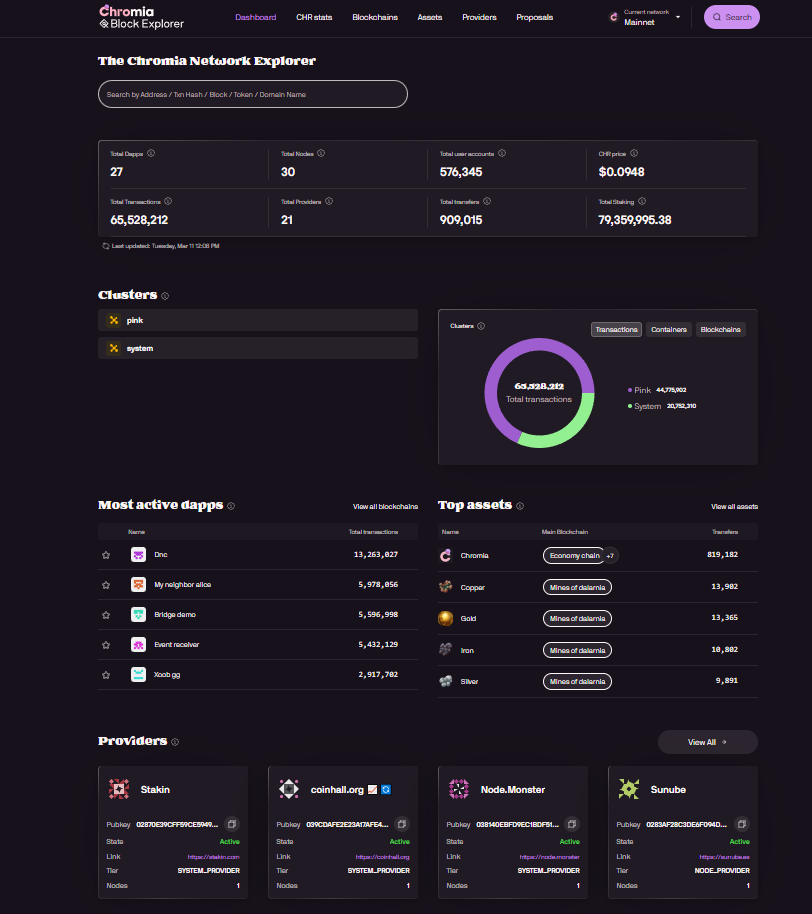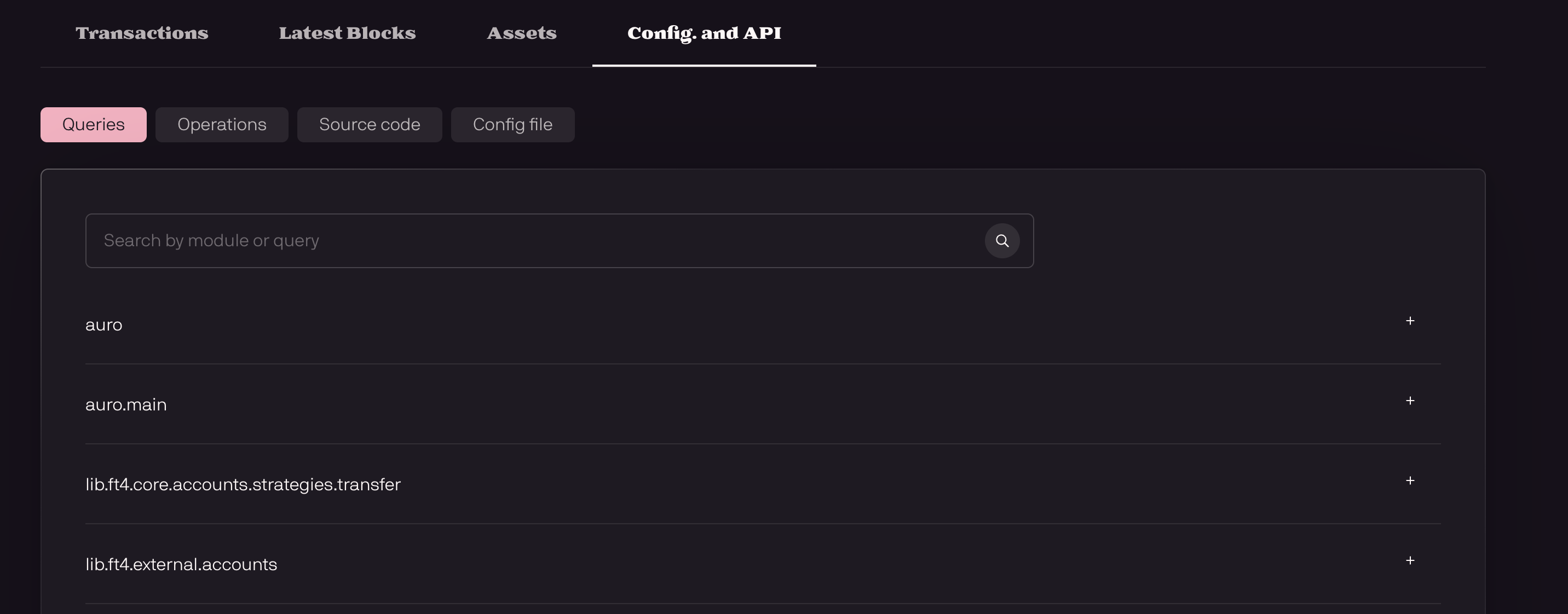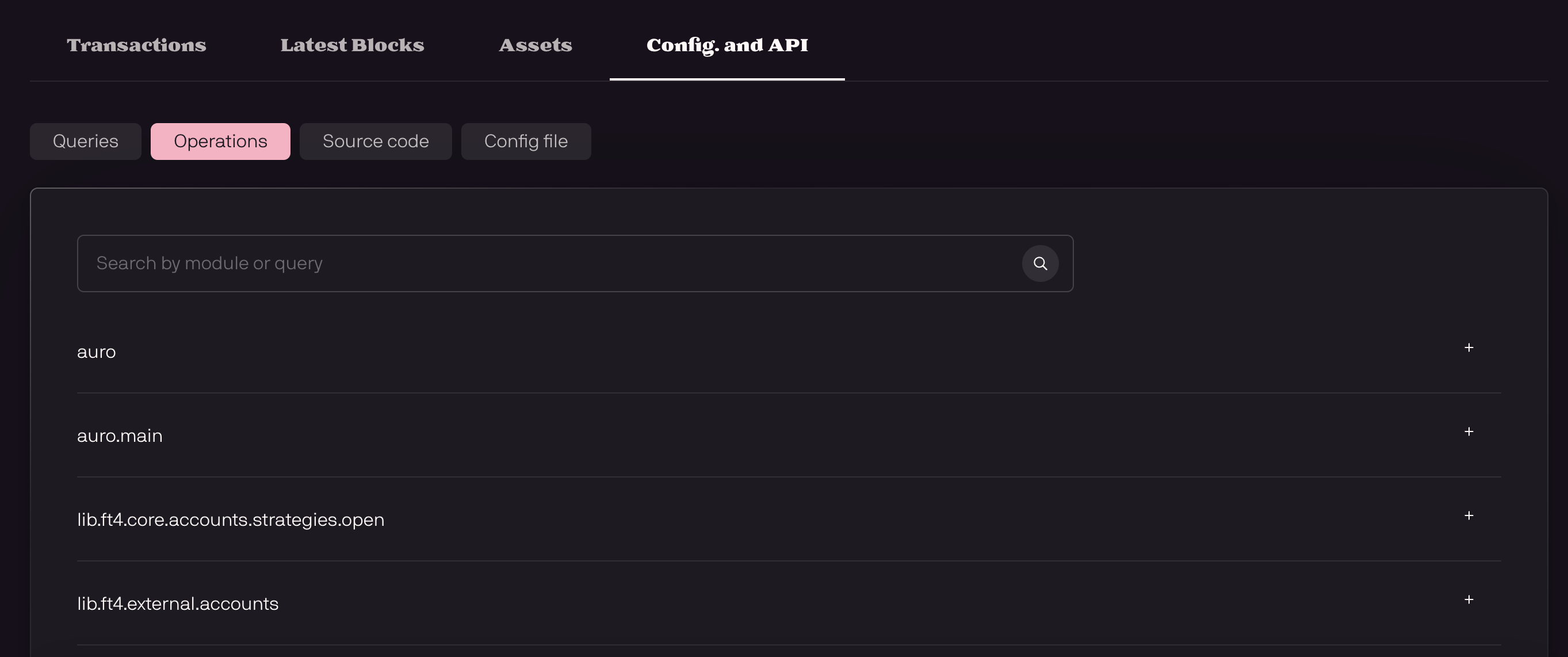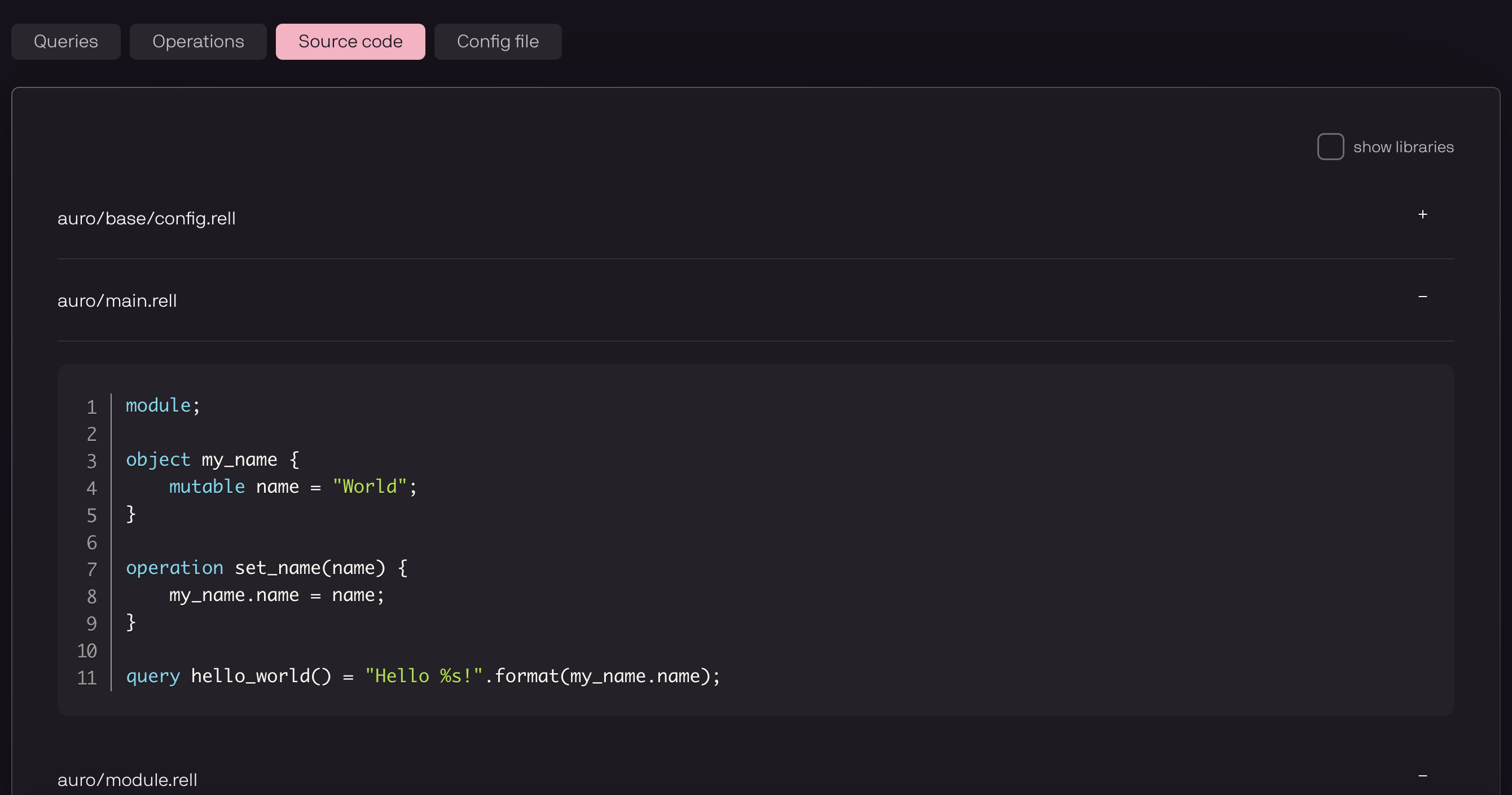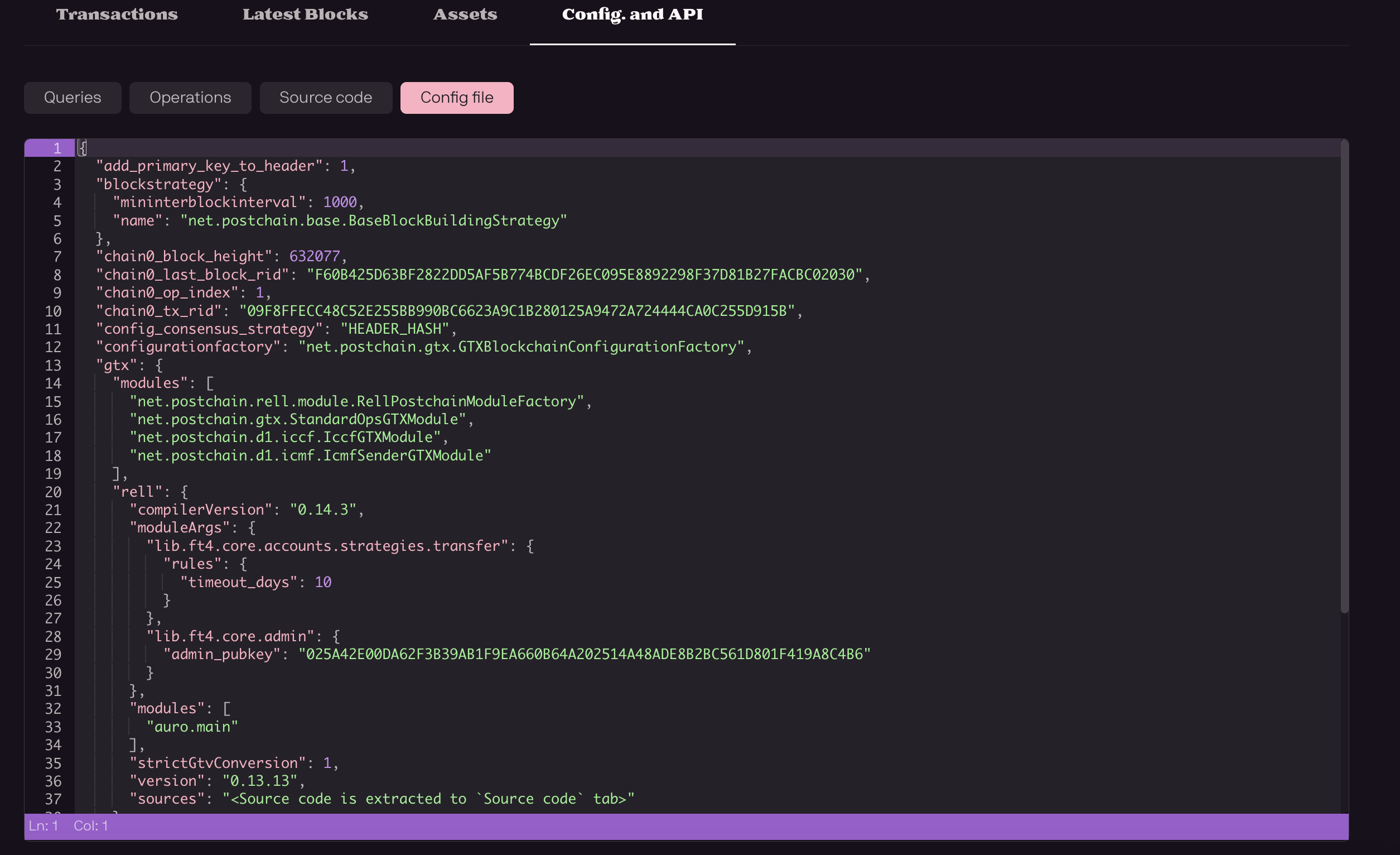Use the Block Explorer to test and validate your dapp deployment
Search for blockchain data
You can utilize the search bar to locate transactions, accounts, blocks, providers, proposals, or tokens by entering relevant identifiers such as transaction hashes, addresses, blockchain names, or proposal IDs.
Explore the Block Explorer dashboard
The explorer’s interface consists of multiple sections:
- Home page: Displays an overview of recent blockchain activity.
- CHR stats section: Showcases CHR token metrics.
- Blockchains section: Provides a history of transactions occurring on the network.
- Assets section: Showcases information on tokens issued on the Chromia network.
- Providers section: Lists active providers, their metrics, and associated nodes.
- Proposals section: Displays governance proposals and their statuses.
Monitor live blockchain activity
To analyze activity on the Chromia network:
- Use the search bar to find specific transactions, blocks, accounts, providers, or proposals.
- Click on a transaction, block, or proposal to view its details.
- Navigate through different sections to explore accounts, assets, providers, and governance proposals.
Test dapp functionality with read queries
- Navigate to the Config. and API section where you see Queries, Operations, Source code, and Config file tabs.
- Click on the Queries tab to display a list of available Rell queries.
- Use the Search bar to find a specific query or browse the list of modules and queries.
- Click the Query or + icon next to the query name—in this case, 'get_account_by_id'.
- Enter the account ID in the
id (byte_array)field. Ensure the ID is in the correct format. - Click Send query to execute it, then review the response in the JSON tab.
- If adjustments are required, update the parameters or modify the query, and re-run the query.
Validate dapp behavior with write operations
- Navigate to the Config. and API section, and click Operations to view the list of available Rell operations.
- Use the Search bar to find a specific operation or browse the modules/operations list.
- Click the Operation or + icon next to the operation name—in this case,
register_asset. - Enter the required fields (e.g.,
name,symbol,decimals,icon_url) as prompted by the UI. - If your dapp requires wallet authorization, click Connect Wallet and follow the instructions.
- Click Submit to run
register_asset, then review the response. - If you need to modify parameters or the underlying logic, make changes, then re-run the operation.
Debug logic by reviewing source code
- Navigate to the Config. and API section and click Source code to view the list of Rell files and modules.
- Click the File or + icon to expand a file (for example,
auro/main.rell). - Review the code directly in the interface, scrolling through the file contents to understand the logic or definitions.
Confirm deployment settings in the config file
- Navigate to the Config. and API section and click Config file to open the Rell configuration and environment settings.
- Review the existing parameters (e.g.,
blockstrategy,gtx,rell,revolt) to understand how your dapp is configured.
